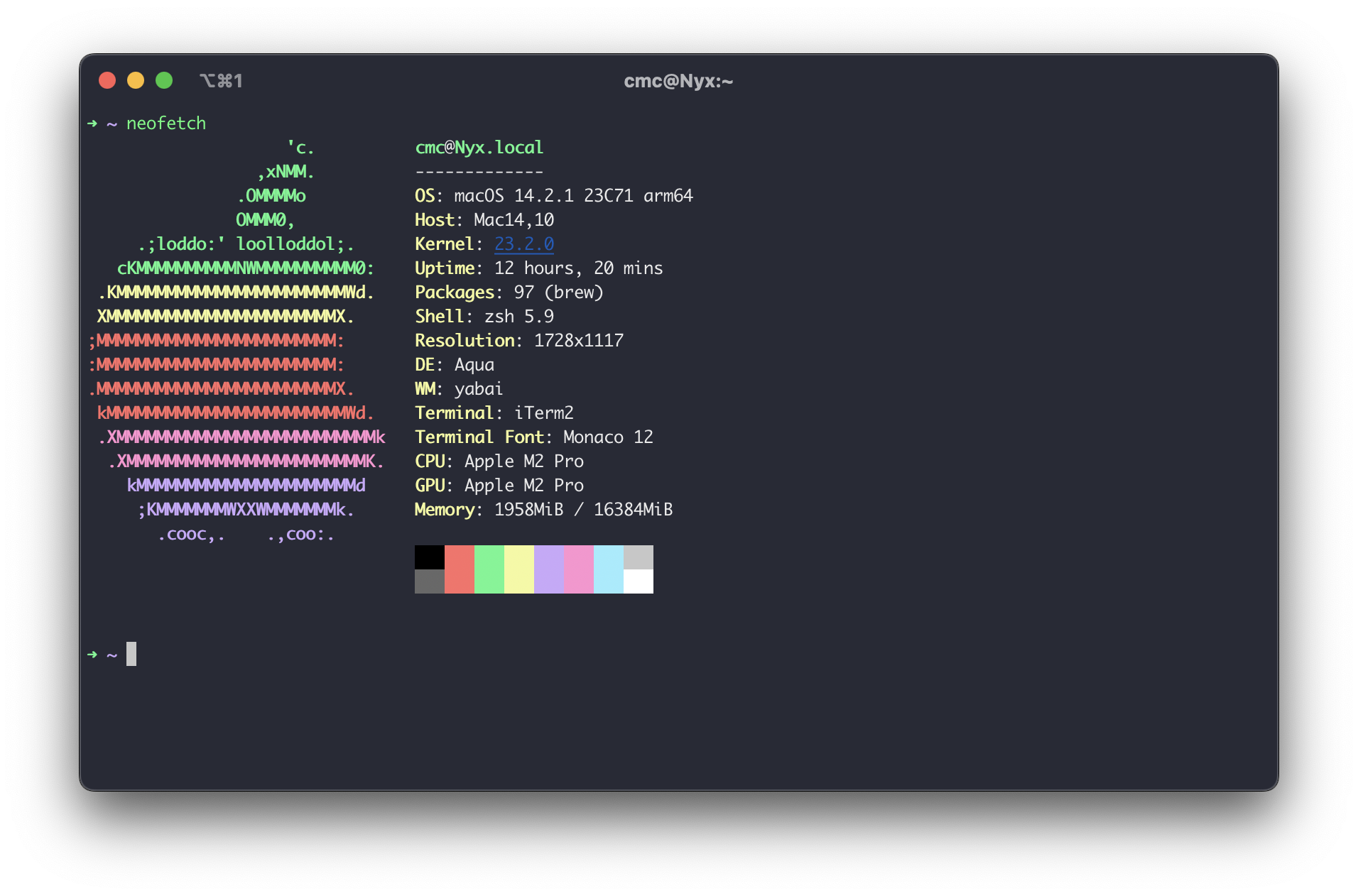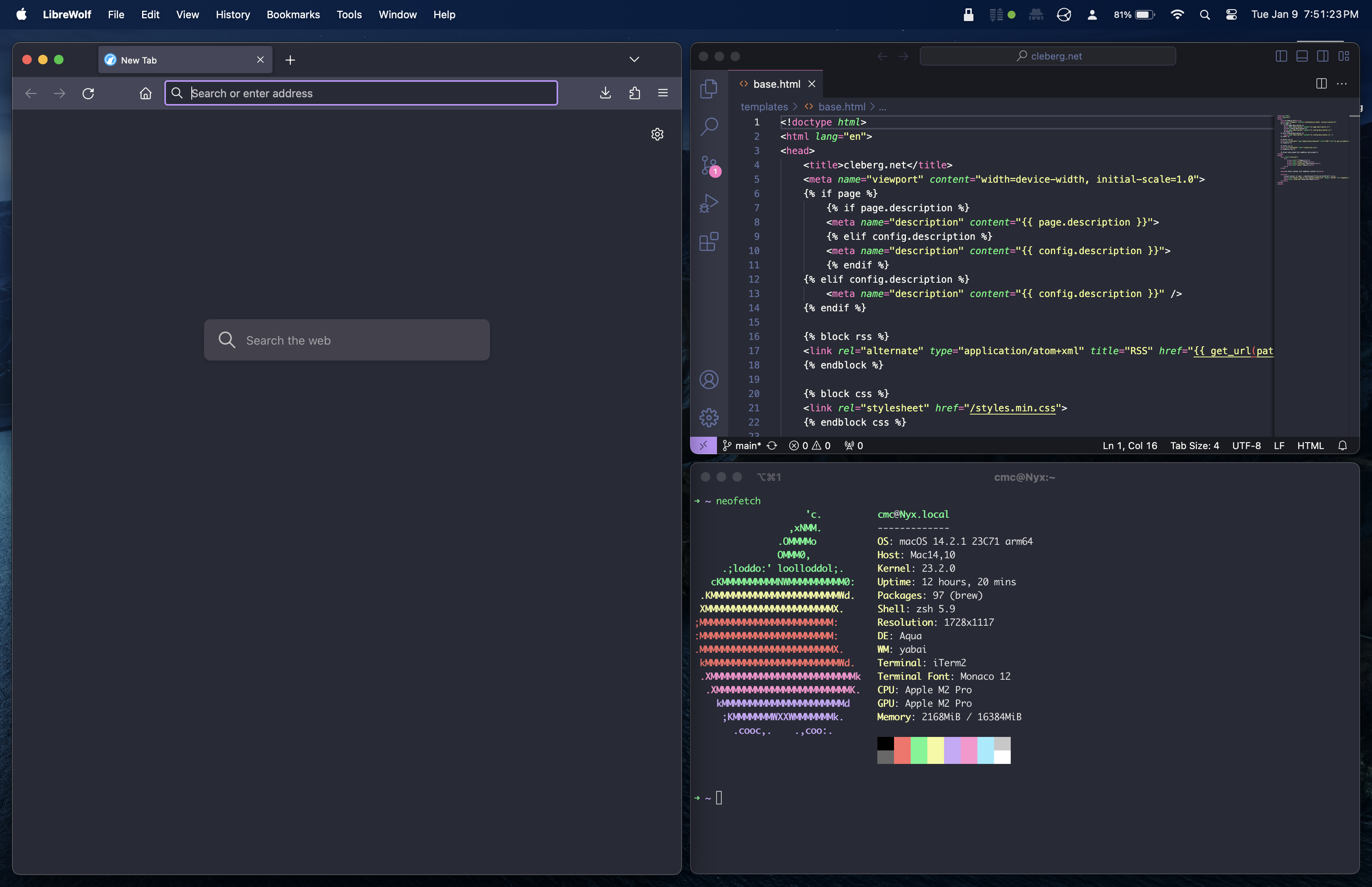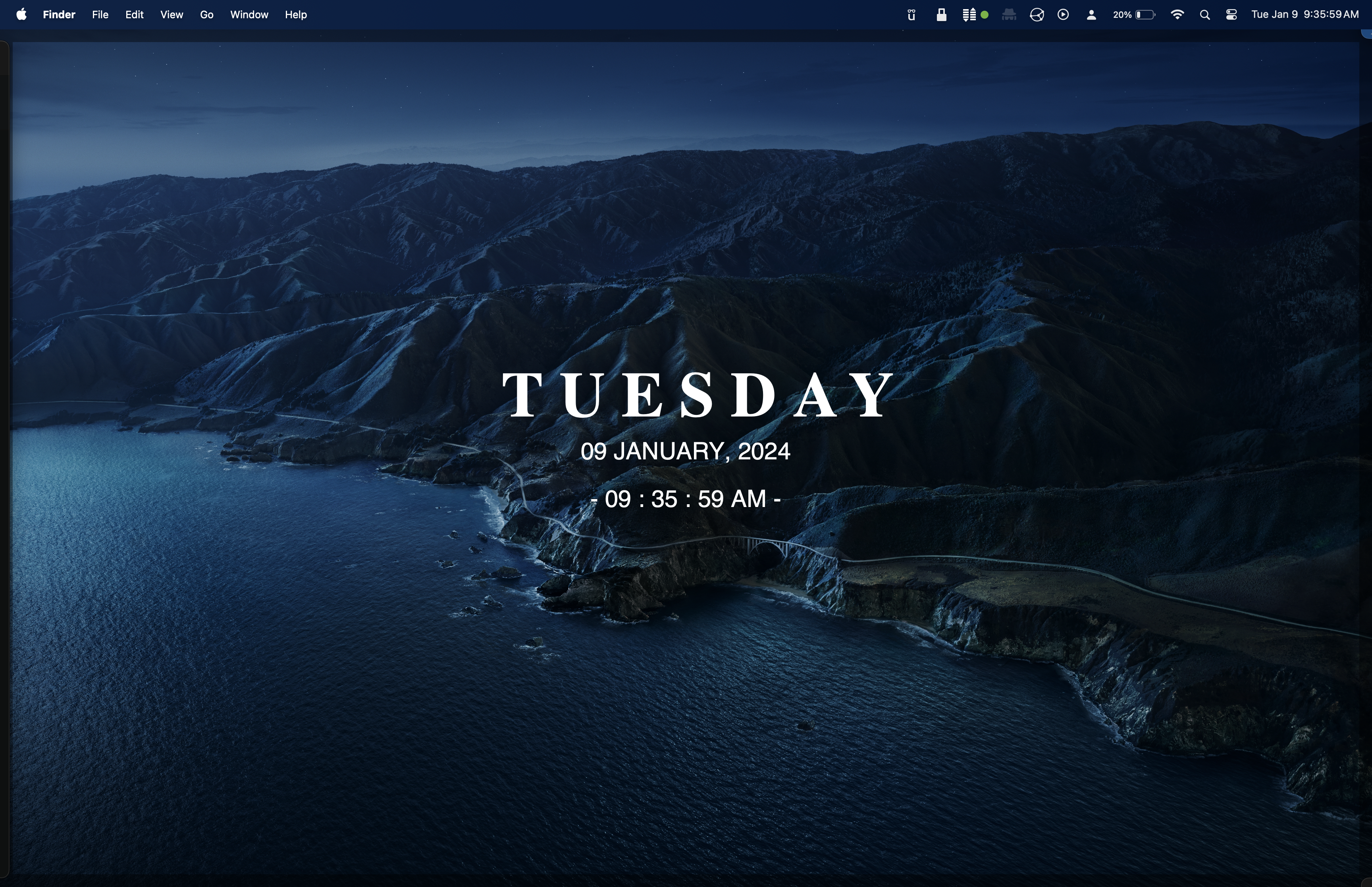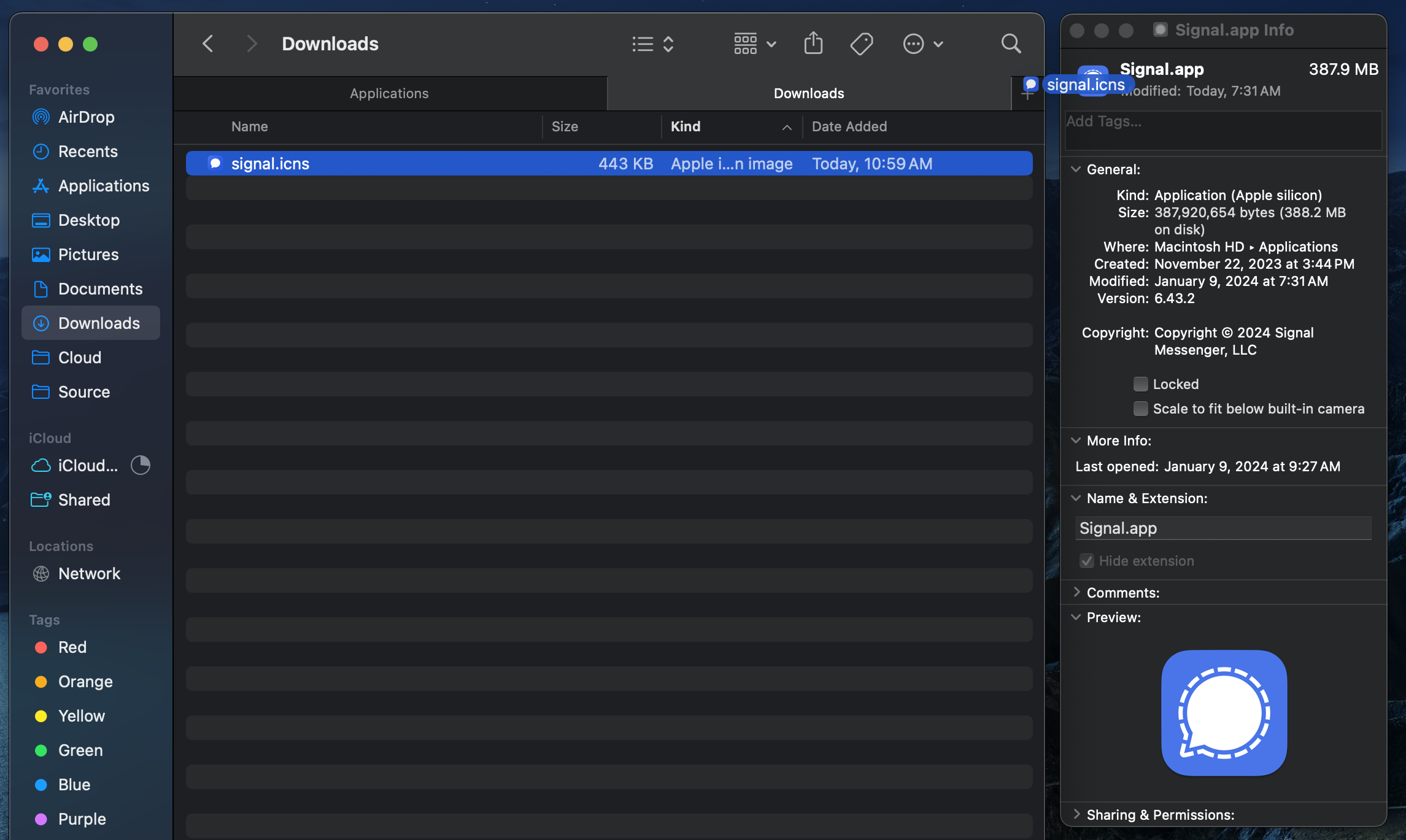diff options
| author | Christian Cleberg <hello@cleberg.net> | 2024-04-27 17:01:13 -0500 |
|---|---|---|
| committer | Christian Cleberg <hello@cleberg.net> | 2024-04-27 17:01:13 -0500 |
| commit | 74992aaa27eb384128924c4a3b93052961a3eaab (patch) | |
| tree | d5193997d72a52f7a6d6338ea5da8a6c80b4eddc /content/blog/2024-01-09-macos-customization.md | |
| parent | 3def68d80edf87e28473609c31970507d9f03467 (diff) | |
| download | cleberg.net-74992aaa27eb384128924c4a3b93052961a3eaab.tar.gz cleberg.net-74992aaa27eb384128924c4a3b93052961a3eaab.tar.bz2 cleberg.net-74992aaa27eb384128924c4a3b93052961a3eaab.zip | |
test conversion back to markdown
Diffstat (limited to 'content/blog/2024-01-09-macos-customization.md')
| -rw-r--r-- | content/blog/2024-01-09-macos-customization.md | 181 |
1 files changed, 181 insertions, 0 deletions
diff --git a/content/blog/2024-01-09-macos-customization.md b/content/blog/2024-01-09-macos-customization.md new file mode 100644 index 0000000..dd4516d --- /dev/null +++ b/content/blog/2024-01-09-macos-customization.md @@ -0,0 +1,181 @@ ++++ +date = 2024-01-09 +title = "Customizing macOS" +description = "" +draft = false ++++ + +I have been using macOS more than Linux lately, so I wrote this post to +describe some simple options to customize macOS beyond the normal +built-in settings menu. + +While not all-encompassing, the options below should be a good start for +anyone looking to dive down the rabbit hole. + +# Basics + +## Package Management + +To install a lot of software on macOS, you will need +[Homebrew](https://brew.sh/). You can use their installation script to +get started. Simply open the `Terminal` application and paste +the following snippet: + +```sh +/bin/bash -c "$(curl -fsSL https://raw.githubusercontent.com/Homebrew/install/HEAD/install.sh)" +``` + +This will allow you to easily install and manage applications and other +software easily through the `brew` command. + +## Terminal + +If you\'re serious about customizing your macOS system, I highly +recommend installing a terminal emulator that you like and if you\'re +not comfortable on the command line yet, start learning. A lot of +customization options require you to edit hidden files, which is easiest +in a terminal. + +There are options like iTerm2, Kitty, Alacritty, Hyper, Warp, or the +built-in Terminal app. + +I use [iTerm2](https://iterm2.com/), which can be installed with +Homebrew: + +```sh +brew install iterm2 +``` + + + +To install color schemes, such as the Dracula scheme shown in the +screenshot above, you visit [iTerm +Themes](https://iterm2colorschemes.com/) and follow their installation +instructions to install any of the themes. + +# Desktop + +## Window Management + +[yabai](https://github.com/koekeishiya/yabai) is a tiling window manager +for macOS. While other window managers exist, I found that most of them +struggled to create logical layouts and to allow me to easily move +windows around the screen. + +Some advanced settings for yabai are only available if partially disable +System Integrity Protection (SIP). However, I chose not to do this and +it hasn\'t affected my basic usage of yabai at all. + +Refer to the [yabai +wiki](https://github.com/koekeishiya/yabai/wiki/Installing-yabai-(latest-release)) +for installation instructions. You will need to ensure that yabai is +allowed to access the accessibility and screen recording APIs. + +You can see a basic three-pane layout atuomatically configured by yabai +for me as I opened the windows below. + + + +## Keyboard Shortcuts + +[skhd](https://github.com/koekeishiya/skhd) is a simple hotkey daemon +that allows you to define hotkeys in a file for usage on your system. + +Installation is simple: + +```sh +brew install koekeishiya/formulae/skhd +skhd --start-service +``` + +After installation, be sure to allow `skhd` access to the +accessibility API in the macOS privacy settings. + +You can configure your hotkeys in the `~/.config/skhd/skhdrc` +file: + +```sh +nano ~/.config/skhd/skhdrc +``` + +For example, I have hotkeys to open my browser and terminal: + +``` conf +# Terminal +cmd - return : /Applications/iTerm.app/Contents/MacOS/iTerm2 + +# Browser +cmd + shift - return : /Applications/LibreWolf.app/Contents/MacOS/librewolf +``` + +## Widgets + +[uebersicht](https://github.com/felixhageloh/uebersicht/) is a handy +desktop-based widget tool with a plethora of community-made widgets +available in the [widgets +gallery](https://tracesof.net/uebersicht-widgets/). You can also write +your own widgets with this tool. + +To install, simply download the latest release from the [uebersicht +website](https://tracesof.net/uebersicht/) and copy it to the +Applications folder. + +See below for an example of the +[Mond](https://tracesof.net/uebersicht-widgets/#Mond) widget in action. + + + +## Status Bar + +[SketchyBar](https://github.com/FelixKratz/SketchyBar) is a customizable +replacement for the macOS status or menu bar. + +You can browse a discussion where various users shared their +[configurations](https://github.com/FelixKratz/SketchyBar/discussions/47?sort=top) +for inspiration or to copy their dotfiles. + +See below for a quick (& slightly broken) copy of +[zer0yu\'s](https://github.com/zer0yu/dotfiles) SketchyBar +configuration. + + + +## Dock + +The easiest way to customize the dock is to install +[uBar](https://ubarapp.com/), which uses a Windows-like menu bar as the +default style. + +However, the built-in macOS dock cannot be disabled and can only be set +to \"always hidden\". This can be annoying as it will pop out any time +your mouse cursor passes closely to the dock edge of the screen. Because +of this, I simply use the built-in dock instead of customizing it with +third-party software. + +Regardless, see below for the default installation style of uBar. + + + +## Application Icons + +You can also customize the icon of any application in macOS, which will +show up in Finder, the Dock, Launchpad, search results, etc. I recommend +using [macOSicons](https://macosicons.com/) to download icons you want, +and then apply them by following this process. + +1. Open the Finder application. +2. Navigate to the `Applications` folder. +3. Right-click an application of your choice, and select + `Get Info`. +4. Drag the image you downloaded on top of the application\'s icon at + the top of information window (you will see a green \"plus\" symbol + when you\'re hovering over it). +5. Release the new icon on top of the old icon and it will update! + +You can see an example of me dragging a new `signal.icns` +file onto my Signal.app information window to update it below: + + |
